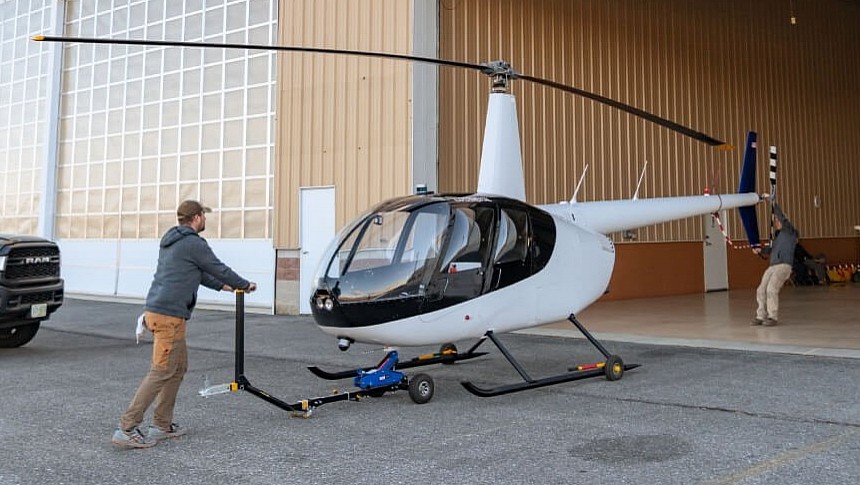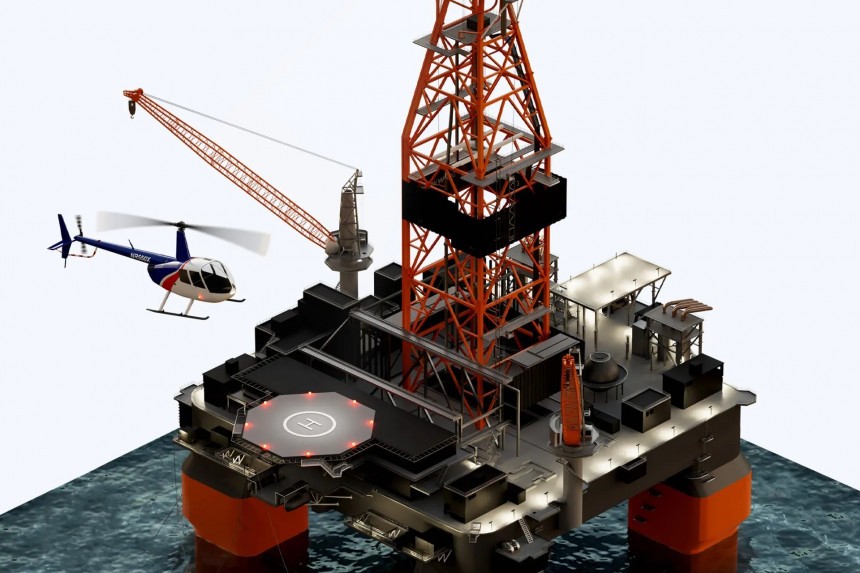The rules for private helicopter usage are very strict and include complying with all FAA regulations, possessing a valid pilot license, and obtaining insurance before taking off, so for most regular folks, owning a helicopter is an impossible dream at the end of a never-ending rainbow.
This status quo might change in the near future, as Rotor Technologies, a company specializing in the development of autonomous vertical takeoff and landing (VTOL) aircraft, is trying to make things simpler with its latest uncrewed helicopter for civilian use.
The New Hampshire-based company has recently unveiled the R550X autonomous helicopter and says it has already begun production, with the aim of bringing it to market in 2024.
The new unmanned civilian aircraft is based on the firm's Robinson R44 Raven II and is touted as the world's largest of its kind. It boasts a flight time of over three hours and a top speed of 150 mph (241 kph). In terms of loading capacity, it can carry up to 1,200 lb (550 kg) of cargo, which is twice the effective payload of the Robinson R44. As such, the company says it is designed for cargo, utility, and maritime operations that require a greater range and payload capacity than what drones or eVTOLs can currently offer.
"The R550X is going to bring huge safety and economic benefits to a wide range of helicopter use cases. Demonstrating the impact of autonomy in dangerous missions like crop dusting and aerial firefighting is the first step towards our vision for safe and accessible vertical flight," said Rotor CEO Hector Xu.
The company has been testing two autonomous chopper prototypes based on the two-seat R22 since December last year across nine locations in New Hampshire, Idaho, and Oregon. The flight test campaign ended in November, and Rotor is now putting its advanced flight automation technology into a commercial product, the R550X.
Thanks to the autonomous flight control system that uses a slew of sensors and digital fly-by-wire controls, the uncrewed civilian helicopter will be able to fly safely in diverse environments, including nighttime conditions, scenarios with limited visibility, and rough weather conditions.
Moreover, the onboard software is said to be capable of preventing common causes of helicopter accidents, such as inadvertent entry into instrument meteorological conditions (I-IMC), vortex ring state, loss of control, or controlled flight into terrain (CFIT).
The R550X comes equipped with a Lycoming IO-540 six-cylinder piston engine running on 100LL low-lead aviation gasoline, but the company plans to transition to jet-A or sustainable aviation fuel (SAF) for future iterations of the aircraft to ensure net-zero emissions.
As for communication between the autonomous helicopter and ground controllers, it will be ensured by a combination of direct radio, LTE/cellular networks, and satellite links. And since the R550X's communications gateway can run six different data links simultaneously, the likelihood of total link loss is greatly minimized.
Production of the first two R550X units is already underway at Rotor's facilities at Nashua Airport. These units are already spoken for by agricultural aircraft operators who plan on using them for crop dusting purposes.
Prospective buyers can opt to equip the helicopter with a vast array of mission payloads, such as gimbals, cameras, sensors, internal payload mounts, cargo buckets, winches/hoists, and more.
Rotor Technologies will make the R550X uncrewed helicopter available in early 2024 as an experimental-category aircraft, meaning it is designed for tasks that don't involve transporting people. In the long term, the company says it is also planning on getting certification for commercial air taxi operations.
The New Hampshire-based company has recently unveiled the R550X autonomous helicopter and says it has already begun production, with the aim of bringing it to market in 2024.
The new unmanned civilian aircraft is based on the firm's Robinson R44 Raven II and is touted as the world's largest of its kind. It boasts a flight time of over three hours and a top speed of 150 mph (241 kph). In terms of loading capacity, it can carry up to 1,200 lb (550 kg) of cargo, which is twice the effective payload of the Robinson R44. As such, the company says it is designed for cargo, utility, and maritime operations that require a greater range and payload capacity than what drones or eVTOLs can currently offer.
"The R550X is going to bring huge safety and economic benefits to a wide range of helicopter use cases. Demonstrating the impact of autonomy in dangerous missions like crop dusting and aerial firefighting is the first step towards our vision for safe and accessible vertical flight," said Rotor CEO Hector Xu.
The company has been testing two autonomous chopper prototypes based on the two-seat R22 since December last year across nine locations in New Hampshire, Idaho, and Oregon. The flight test campaign ended in November, and Rotor is now putting its advanced flight automation technology into a commercial product, the R550X.
Thanks to the autonomous flight control system that uses a slew of sensors and digital fly-by-wire controls, the uncrewed civilian helicopter will be able to fly safely in diverse environments, including nighttime conditions, scenarios with limited visibility, and rough weather conditions.
Moreover, the onboard software is said to be capable of preventing common causes of helicopter accidents, such as inadvertent entry into instrument meteorological conditions (I-IMC), vortex ring state, loss of control, or controlled flight into terrain (CFIT).
As for communication between the autonomous helicopter and ground controllers, it will be ensured by a combination of direct radio, LTE/cellular networks, and satellite links. And since the R550X's communications gateway can run six different data links simultaneously, the likelihood of total link loss is greatly minimized.
Production of the first two R550X units is already underway at Rotor's facilities at Nashua Airport. These units are already spoken for by agricultural aircraft operators who plan on using them for crop dusting purposes.
Prospective buyers can opt to equip the helicopter with a vast array of mission payloads, such as gimbals, cameras, sensors, internal payload mounts, cargo buckets, winches/hoists, and more.
Rotor Technologies will make the R550X uncrewed helicopter available in early 2024 as an experimental-category aircraft, meaning it is designed for tasks that don't involve transporting people. In the long term, the company says it is also planning on getting certification for commercial air taxi operations.









